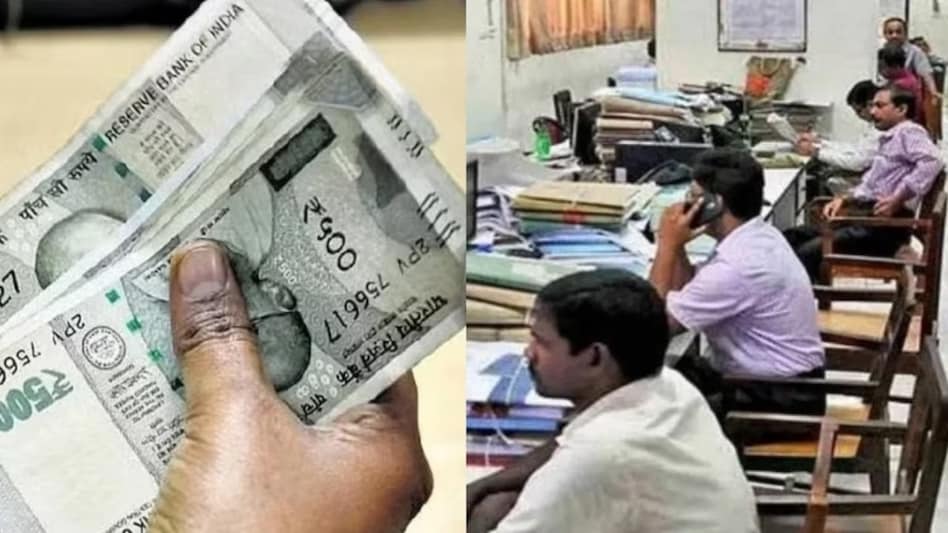The Central Government has taken an initiative to set up a committee to implement the 8th central pay commission and its effect will possibly be felt by millions of government employees and pensioners. This development comes as the tenure of the 7th Pay Commission, implemented in January 2016 under the leadership of Prime Minister Narendra Modi, is set to conclude on December 31, 2025. These new commission recommendations are likely to be implemented from 1 January 2026 with a sweep of new terms for wages, allowances and pensions.
Anticipation Among Employees and Pensioners
More than 50 lakh central government employees and around 65 lakh pensioners (including defense pensioners) are looking forward to the rollout of the 8th Pay Commission. These people hope for changes in their core salary, allowances, pension and the rest of the benefits. Besides, almost 4 lakh employees in Delhi, working in the defense and state government sectors, are also going to be benefitted by this scheme.
Recently, union minister Ashwini Vaishnaw announced the commission is going to be formed by the year 2026, which has further stoked up expectations from the workforce and trade organizations. The upcoming Union Budget is believed to shed light on this issue and there is a lot of hopes among the employees for important announcements on the new pay commission, etc.
Among the main requirements is the expectation of a possible growth in the “fitment factor” that directly influences the determination of adjusted salaries and pensions. Reports suggest that the government may increase the fitment factor from 2.57 to 2.86, which could substantially raise the minimum basic salary from ₹18,000 to ₹51,480.
Understanding the Fitment Factor
Fitment factor is a factor of multiplication in calculating the adjusted basic salary of government services. For instance, under the 7th Pay Commission, a fitment factor of 2.57 was introduced, resulting in a 2.57% increase in basic salary and pension. Assuming that the fitment factor will, in fact, be increased by 2.86 in the context of the eighth pay commission, it will indicate a substantial enhancement in the pay of employees and pensioners.
Comparing the 6th and 7th Pay Commissions
Central Pay Commissions are historically created at intervals of 10 years in order to review and revise the salary scales, benefits, and allowances of the central government employees. Introduced in 2006, the 6th Pay Commission has made the provision of pay bands and grade pay one of the main aspects of reforms. It fixed the lower limit of pay at ₹7,000 per month and the upper limit at ₹80,000 for the Secretary-grade officers with a 1.86 fitment coefficient.
In contrast, the 7th Pay Commission, implemented in 2016, replaced the pay bands and grade pay system with a simplified pay matrix. It fixed the lower limit of the monthly pay to ₹18,000 and the upper limit of the monthly pay at ₹2.50 lakh for the Cabinet Secretary. The fitment factor of 2.57 resulted in substantial salary hikes, while allowances were rationalized, and the gratuity ceiling was raised to ₹20 lakh.
The implementation of the 7th Pay Commission represented a significant financial commitment, with the government’s expenditure increasing by ₹1 lakh crore for the fiscal year 2016-17 alone. This was significantly more than the 1.86% increase in basic pay obtained through the 6th Pay Commission.
Key Features of the 7th Pay Commission
- Minimum Pay: ₹18,000 per month.
- Maximum Pay: ₹2.5 lakh for Cabinet Secretary.
- Fitment Factor: 2.57 times the basic pay.
- Pay Structure: Simplified pay matrix replacing pay bands and grade pay.
- Allowances: Rationalized provisions including alteration of House Rent Allowance (HRA) and other facilities.
- Gratuity Ceiling: Elevated to ₹20 lakh, with safeguards for supplementing the same on a periodic basis with the rate of dearance allowance.
- Expenditure: Added 1 lakh crore to the government’s fiscal burden for FY 2016-17.
Expectations from the 8th Pay Commission
The 8th Pay Commission is anticipated to work on the basis of its predecessors by dealing with inflation and the evolving economic realignment. It is hoped that improvements in salary scales, additional allowances, and, in the case of eligible staff, improved benefits will be realised. On the other hand, the impending new pay commission can tackle issues arising from the escalating cost of living and provide commensurate remuneration to central government personnel and pensioners.
Government’s decision of potentially increasing fitment factor is regarded as a progressive action in the direction of satisfying these expectations. For workers earning the current minimum wage of ₹18,000, the proposed increase from ₹18,000 would be of momentous value to their financial status.
Broader Implications
The inception of the 8th Pay Commission is not a process mere pay revision, but an indication across the government that fair remuneration should be provided to its personnel. Potential pay increases and increases in pensions are likely to lead to higher employee and retiree morale, triggers in consumer spending, and economic growth.
However, such measures also come with fiscal challenges. Government will have to try to reconcile the economic consequence of implementing its new pay commission with its wider economic and budgetary agenda.
Conclusion
The release of the 8th Pay Commission is a landmark event towards fulfilling the changes in the requirements of central government service officers and retirees. Commission will be in place by January 2026 and many people will be clear on their improved salaries, allowances and pensions. While there is a great deal of discussion and anticipation of greater announcements, the proposed alterations, such as an optimized fitment factor, indicate that there is a real desire to improve the financial security and health of both current and retired government workers.
“Stay updated with the latest news and insights – follow us at YPBB News on X for real-time updates and exclusive stories!”
